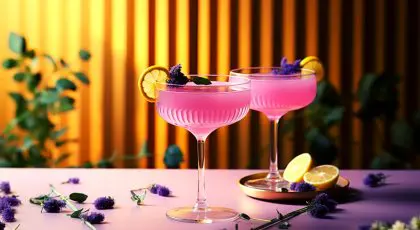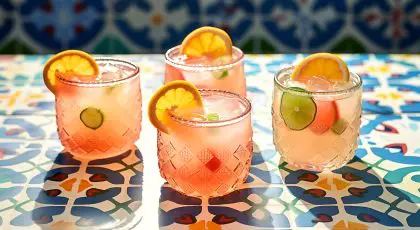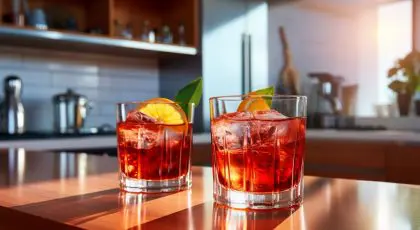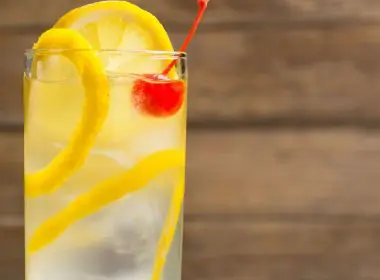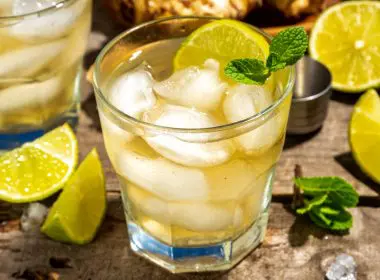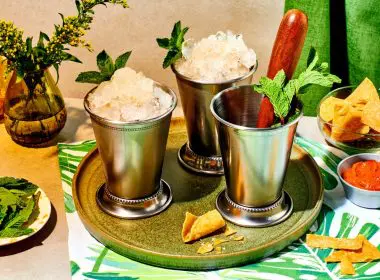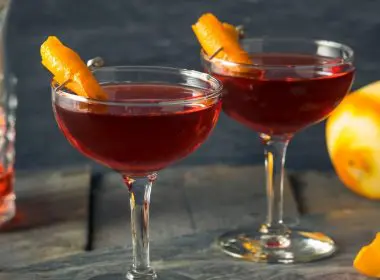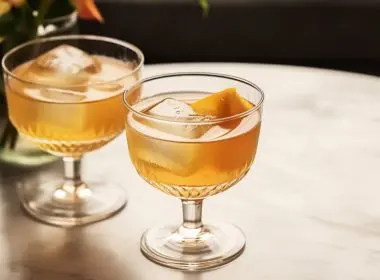Master the Art of Culinary Cocktails: Unique Recipes and Easy Techniques
Jump to:
The cocktail world has collided with foodie culture, and we’re here for it! Culinary cocktails are all about bringing the kitchen to the bar, using exciting techniques and unexpected ingredients to create complex and delicious beverages.
Ever wondered what smoked, umami, or even fat-washed cocktails taste like? We’ve got you covered. Join us as we explore the fascinating world of culinary drinks, dive into techniques like smoking and rice washing, and teach you how to make intriguing gourmet cocktails at home.
Five basic culinary cocktail techniques
There are many tasty angles to the culinary cocktail Rubik’s cube. Here are a few cocktail types to explore when you’re in the mood to don a chef’s hat behind your DIY bar:
1. Smoked cocktails
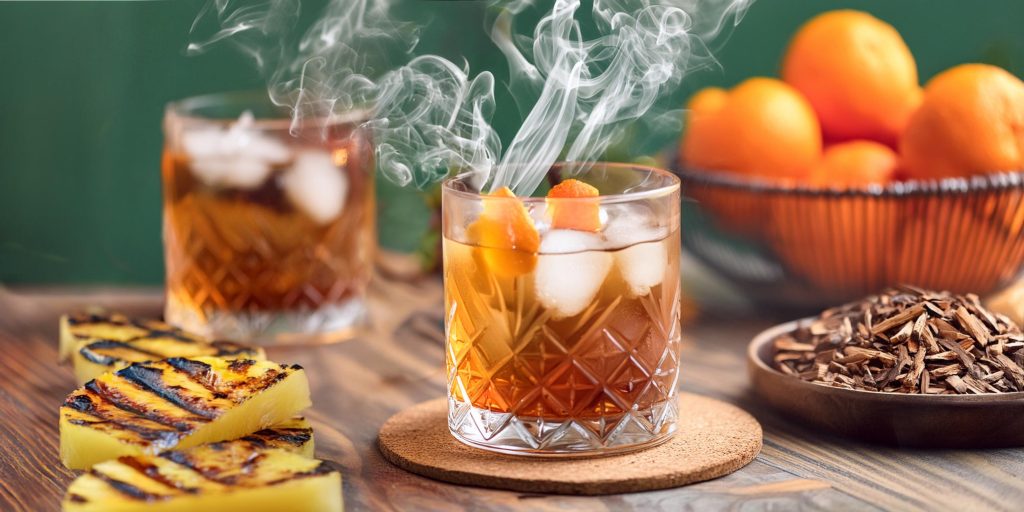
Smoked cocktails have taken the world of DIY cocktails by storm, captivating seasoned and novice mixologists alike with their deliciously daring and sophisticated air. To a large extent, the allure of smoked drinks lies in the seductive nature of the smoke itself, which yields smouldering notes that hint at mystery, intrigue, and a touch of the unexpected.
- Ingredients commonly used: Oak, cherry, apple, and hickory wood chips
- Essential equipment: Smoke gun, smoking box, or a smoker lid and butane torch.
- Basic techniques: There are quite a few ways to add smoke to cocktails. If this is the first time you’re making smoked drinks, we suggest checking out this article on smoking techniques and tricks.
Smoked Paper Plane
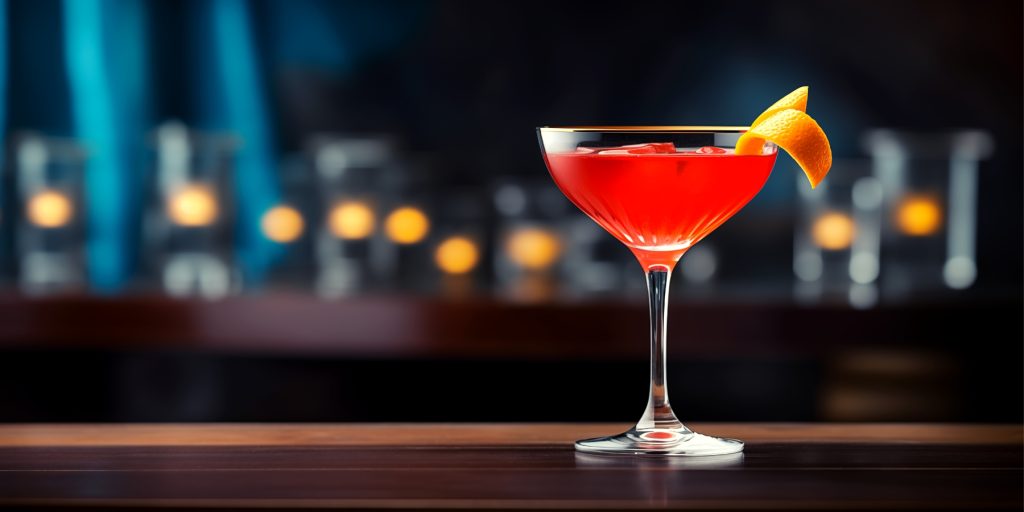
Infusing a Paper Plane cocktail with smoke adds a captivating dimension to its bright and zesty flavours. The smokiness complements the tartness of the lemon juice and the herbal notes of the amaro, amplifying the cocktail’s complexity.
Make it with: Aperol
Read next: How to Add Smoke to Cocktails
2. Umami cocktails
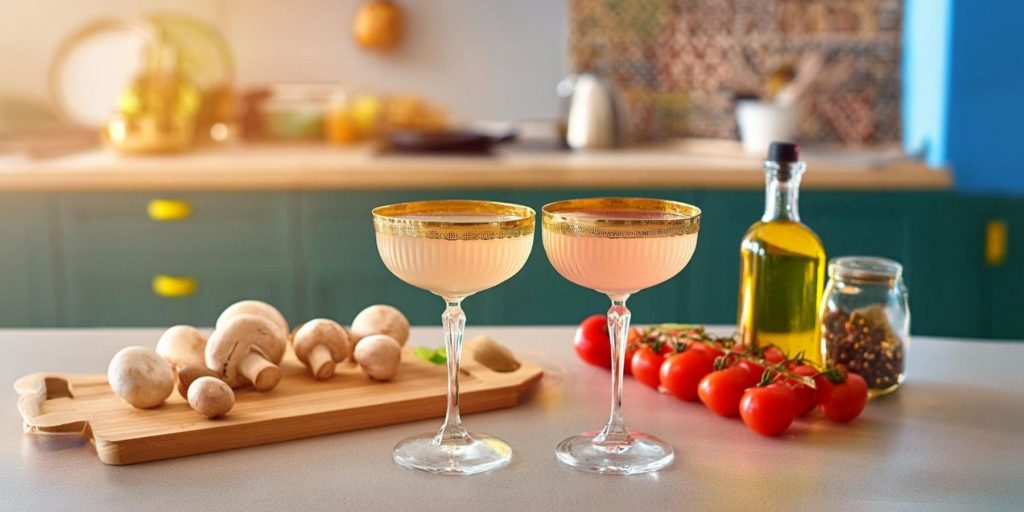
Have you ever enjoyed perfectly aged cheese or a juicy steak and experienced a rich, savoury sensation that went beyond sweet, sour, salty, and bitter? That’s umami, also called the ‘fifth taste.’ In cocktails, adding umami notes isn’t about replicating food, but rather leaning into depth and complexity.
- Ingredients commonly used: Miso, mushrooms, tomatoes, soy sauce, brine
- Essential equipment: Typical bar tools and a sense of adventure!
Dirty Martini
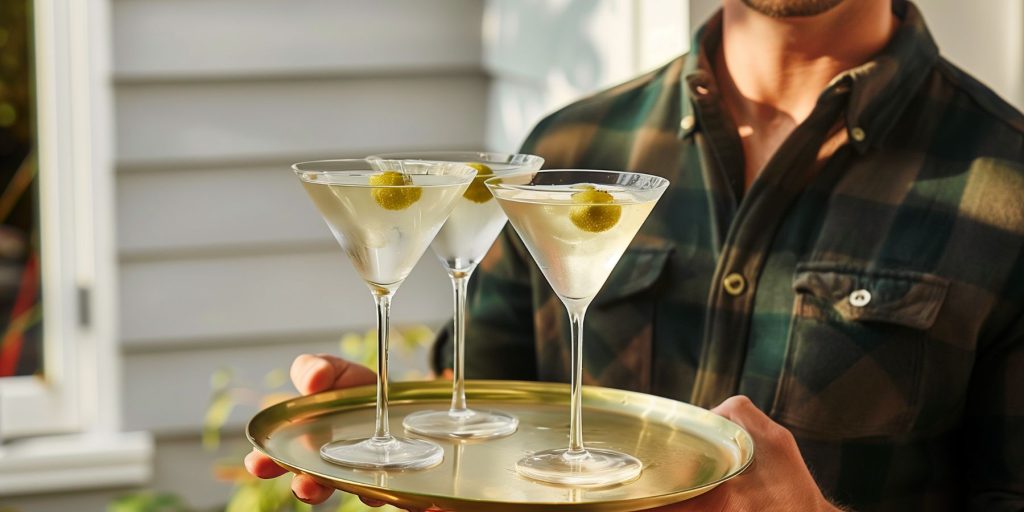
A Dirty Martini takes the core ingredients of a Classic Martini – gin and vermouth – and adds one (rather unexpected) ingredient: olive brine. By adding a dash of olive brine, the drink is given a uniquely salty and savoury flavour that many people love.
Read next: Guide to Making Umami Cocktails
3. Craft cocktails
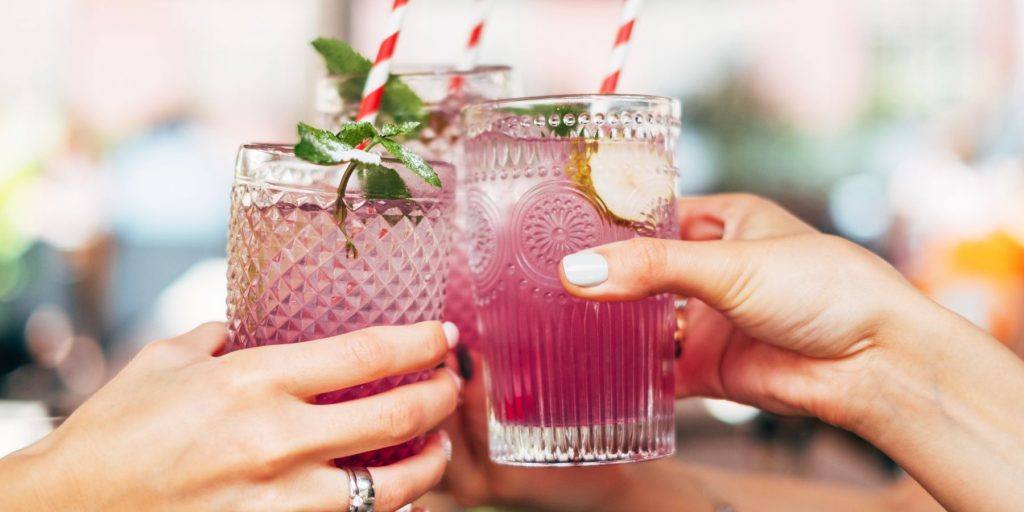
Craft cocktails, also known as artisan cocktails, are meticulously crafted drinks that prioritise quality, flavour, and creativity. They are distinguished by the use of fresh, high-quality ingredients, and a commitment to creativity. This trend bloomed in the late 90s, when a resurgence of classic recipes and mixology techniques became a hot commodity in bars around the world.
- Ingredients commonly used: Fresh seasonal ingredients
- Basic techniques: Choose high-quality ingredients and make it the star of the show.
Key Lime Martini
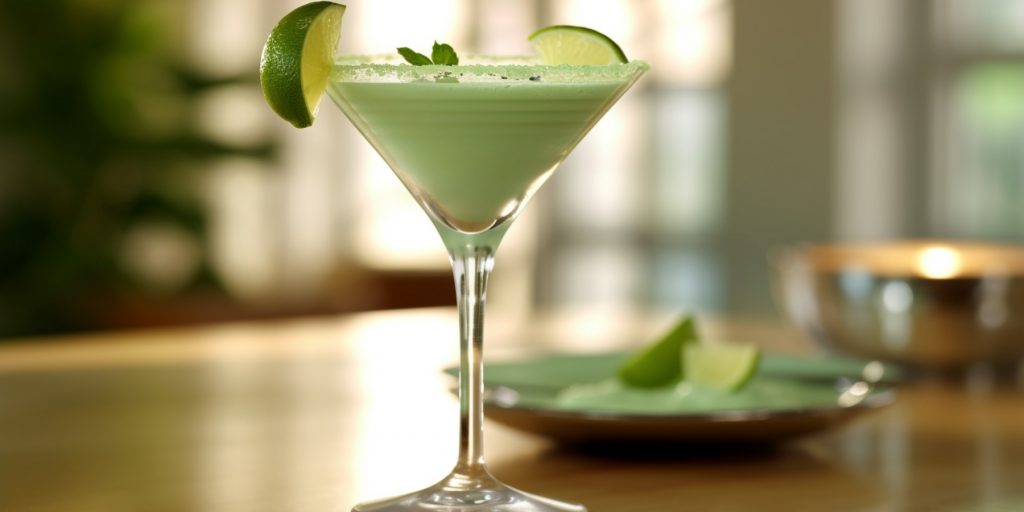
If you love the iconic zesty pie, you will fall head over heels for our Key Lime Pie Martini recipe. Made with vanilla vodka, key lime juice, cream of coconut, pineapple juice, and heavy cream, this dessert-inspired cocktail will go down an absolute treat.
Read next: 13 Best Craft Cocktails to Make at Home
4. Fat-washed cocktails
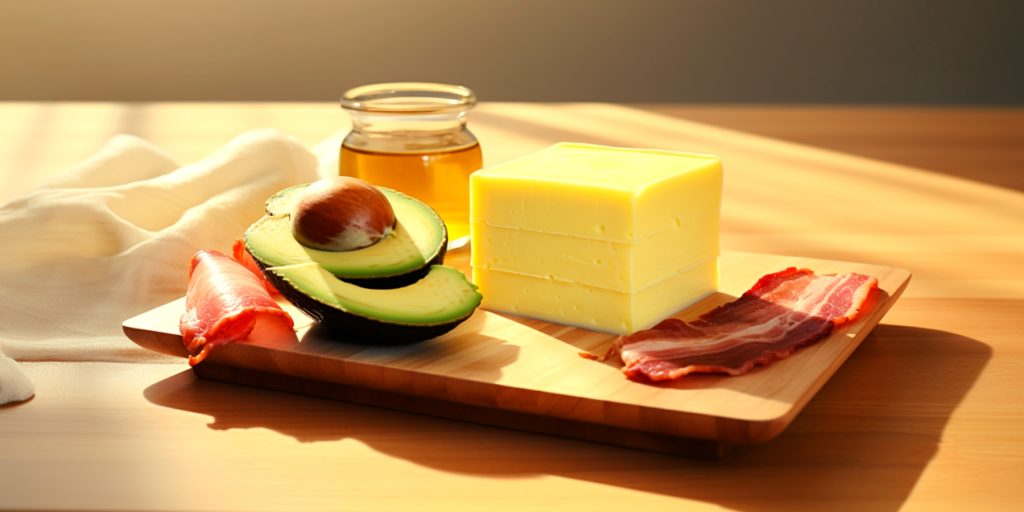
Fat-washed cocktails are a great way to experiment with new flavours. When you fat-wash a spirit, the fat molecules bind to the alcohol molecules and extract the flavours of the fat. In short, fat-washing changes the texture of a spirit by infusing it with the flavours and aromas of the chosen fat source. While the process doesn’t significantly alter the physical texture of the spirit itself, it profoundly impacts its flavour.
- Ingredients commonly used: Bacon, butter, or olive oil
- Essential equipment: A jar or wide-necked container with a lid, cheesecloth, or coffee filter, fat of your choice, liquor of your choice (the ratio of fat to spirit should be around 1:4)
- Basic techniques: Infusion and straining
Bacon Old Fashioned
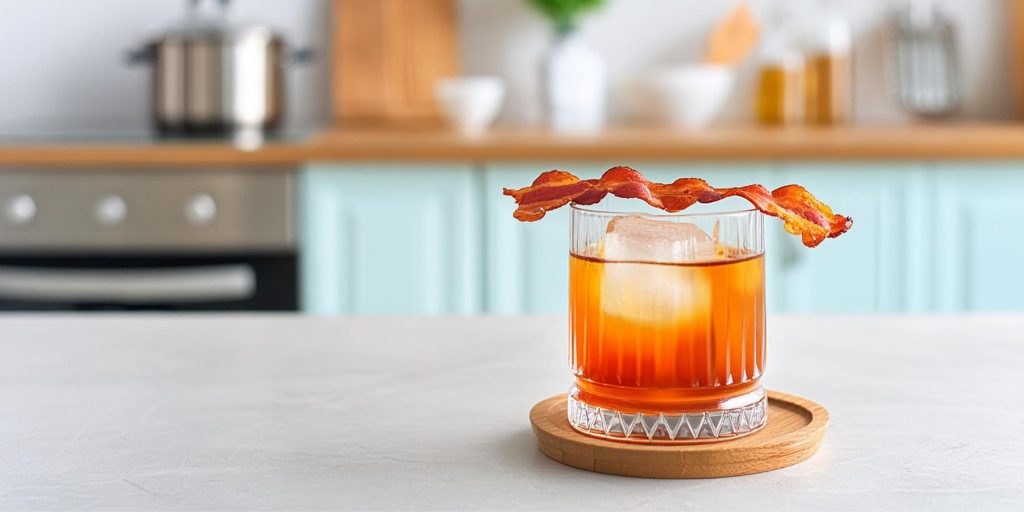
Built on a base of bacon-washed bourbon, the Old Fashioned really gets to lean into its dashing and dapper persona. The smokiness of the bacon tunes this drink to a whole different chord, and we love the tune!
Make it with: Wild Turkey 101 Bourbon
Read next: Best Fat-Washed Cocktails to Make at Home
5. Cocktails with starch
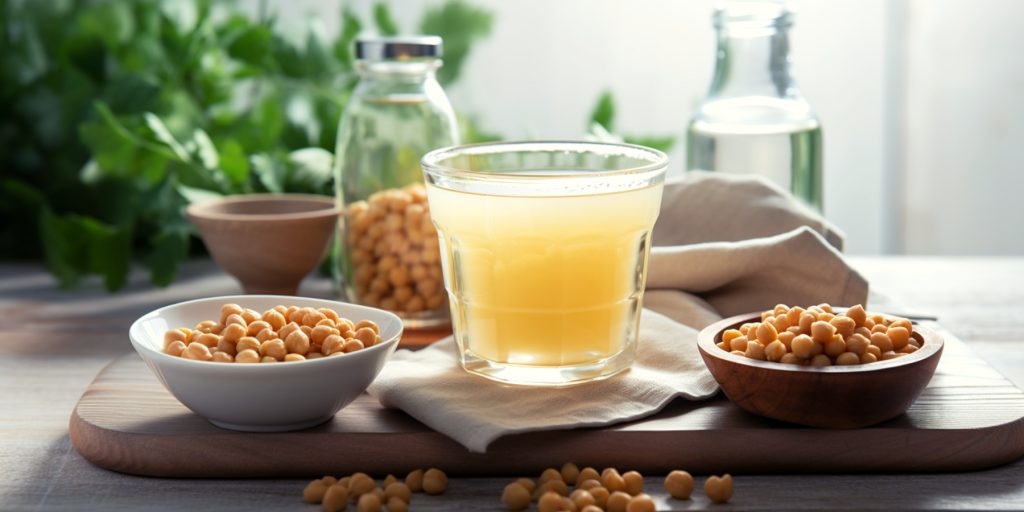
Starch gives cocktails a smoother mouthfeel. This can be especially beneficial for cocktails that contain citrus juice or other acidic ingredients, as the starch can help to buffer the acidity and create a more pleasant drinking experience. For instance, when uncooked rice is stirred with other cocktail ingredients, it releases starch and proteins that bind to the alcohol and other flavours. This helps to create a more cohesive and ’rounded’ drink.
- Ingredients commonly used: Rice, soy lecithin, aqua faba
- Basic techniques: Rice washing, emulsification
Sushi Rice Negroni
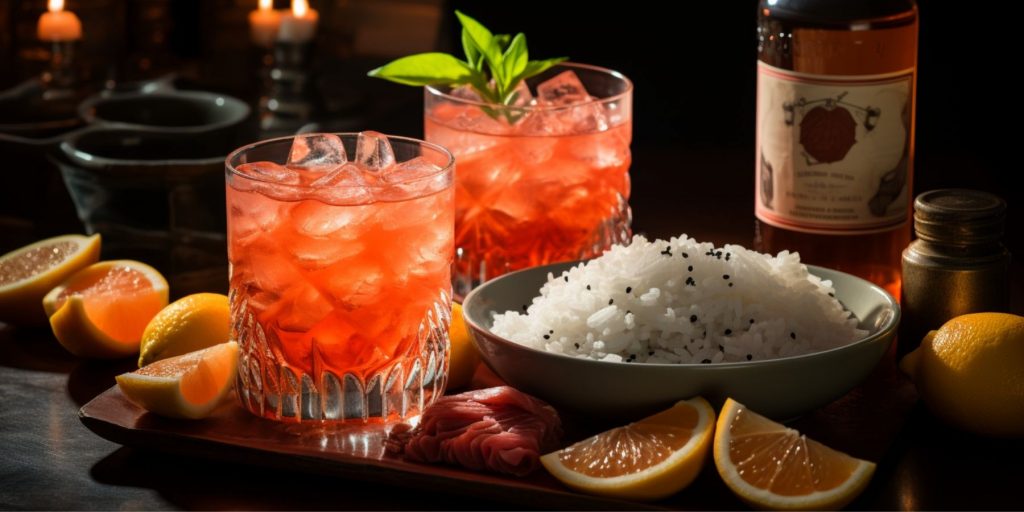
When sushi rice is stirred into drinks like a Negroni, it closes the gap between flavours and smooths out this citrus-forward drink. It also enhances the cocktail’s flavour and makes it ‘stick’, resulting in a lovely taste that lingers on the palate most intriguingly.
Make it with: Bulldog Gin
Read next: How to Use Starch in Cocktails
Six culinary cocktail recipes to try at home
1. Smoked Revolver Cocktail
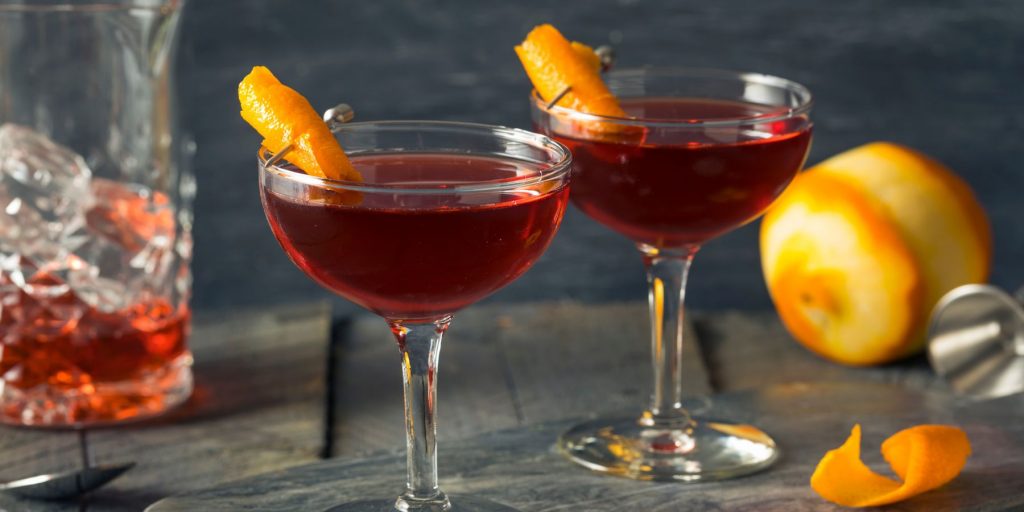
A smoked Revolver cocktail takes the boldness of bourbon and the warmth of coffee liqueur to a new level. A smoky essence weaves through the robust bourbon notes and plays in harmony with the sweetness of the rest of the ingredients, resulting in a balanced and enticing drink that captivates with every sip.
2. Parmesan Espresso Martini
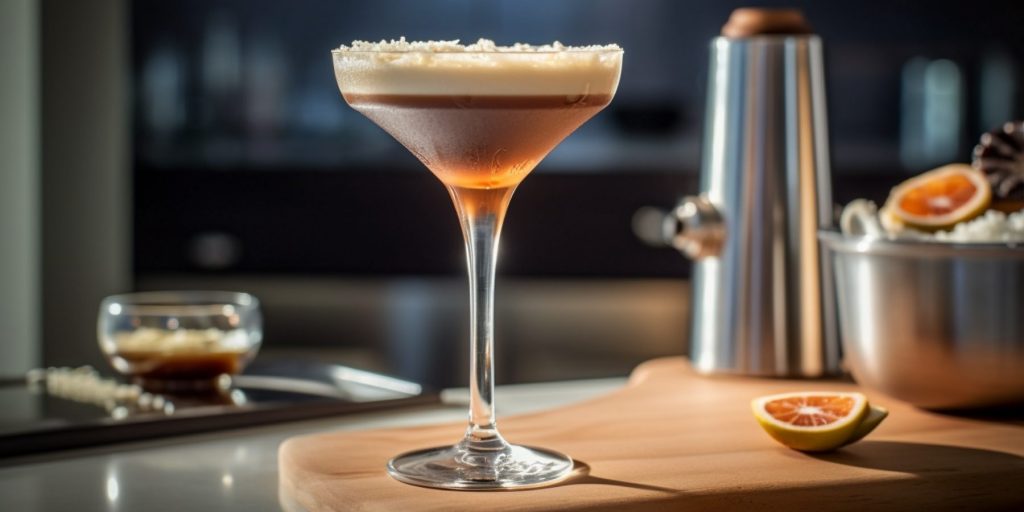
An Espresso Martini topped with a grating of top-quality Parmesan cheese might sound a little out there, but we would like to remind you how well cheese and coffee go together in morish dishes like Tiramisu. The Parmesan Espresso Martini makes a great after-dinner drink that doubles as a tasty conversation starter.
3. Lavender Tom Collins
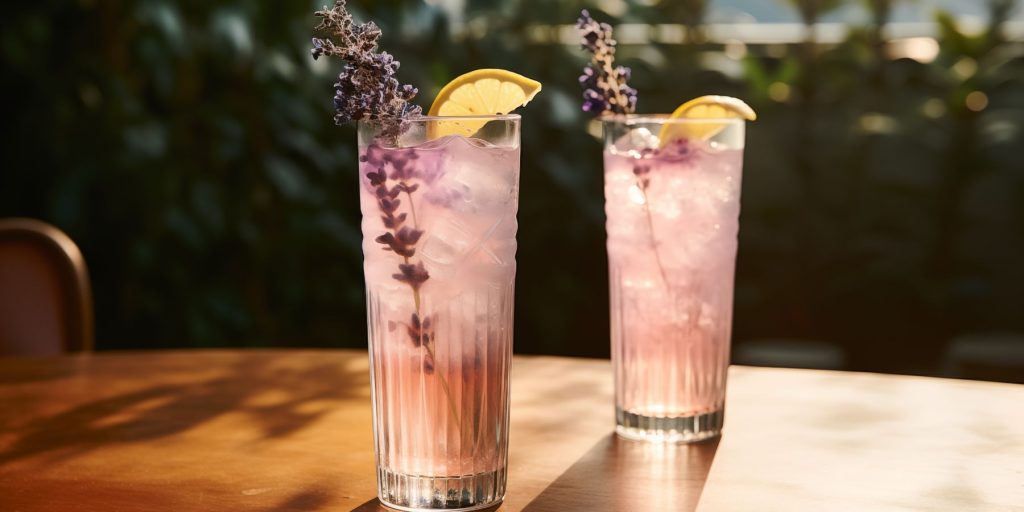
This twist on the classic Tom Collins calls for homemade lavender syrup, which is very easy to make. This iconic highball is a variation of the classic Gin Sour and the ideal drink to clink when the weather is balmy and you want something ice cold, tall, and delicious to enjoy at leisure. Add a touch of lavender to your sugar syrup for good luck, and you’ve got the ultimate summery sipper.
4. Barbacoa Mezcal Cocktail
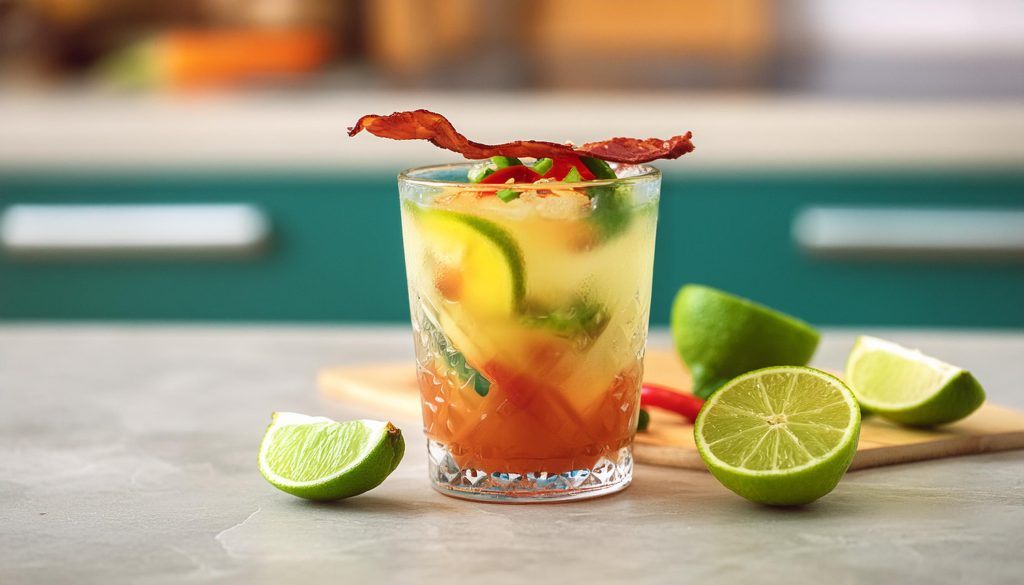
Bell pepper in a cocktail? Why yes! It’s a game-changer. To make a Barbacoa Mezcal Cocktail, muddle three slices of red bell pepper, and three lime wedges in the bottom of a cocktail shaker. Add half a tablespoon of chipotle sauce, 15ml lemon juice, 15ml ginger sugar syrup, 20ml agave nectar, 60ml mezcal, and some ice. Shake until frosty, and pour into a rocks glass, unstrained. Garnish with a piece of beef jerky and serve.
Make it with: Montelobos Mezcal
5. Kimchi Bloody Mary
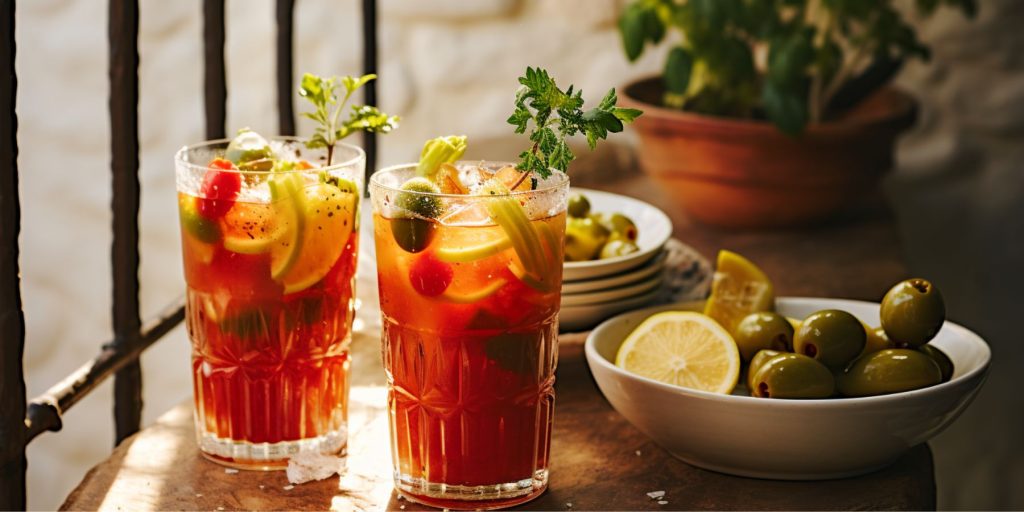
Give your brunch a spicy Korean twist with this mouth-watering Kimchi Bloody Mary. Savoury, slightly sweet, and packed with spicy, zingy flavours, this twist on the classic brunchtime drink can be an acquired taste, but if you love a fermented vibe, it will blow your socks off!
6. Pickle Juice Whiskey Sour
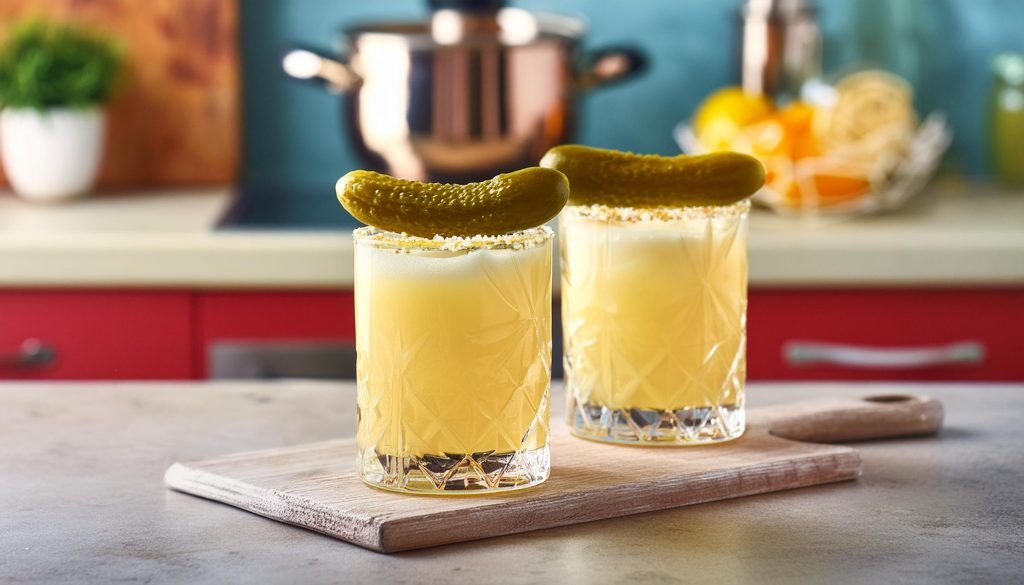
A tantalising fusion of tangy pickle juice, smooth whiskey, and zesty citrus, the Pickle Juice Whiskey Sour is a captivating drink that ventures off the beaten track in the most delightful way. A must-try for those who love a drink with a twist in the tale…
More advanced gourmet cocktail techniques
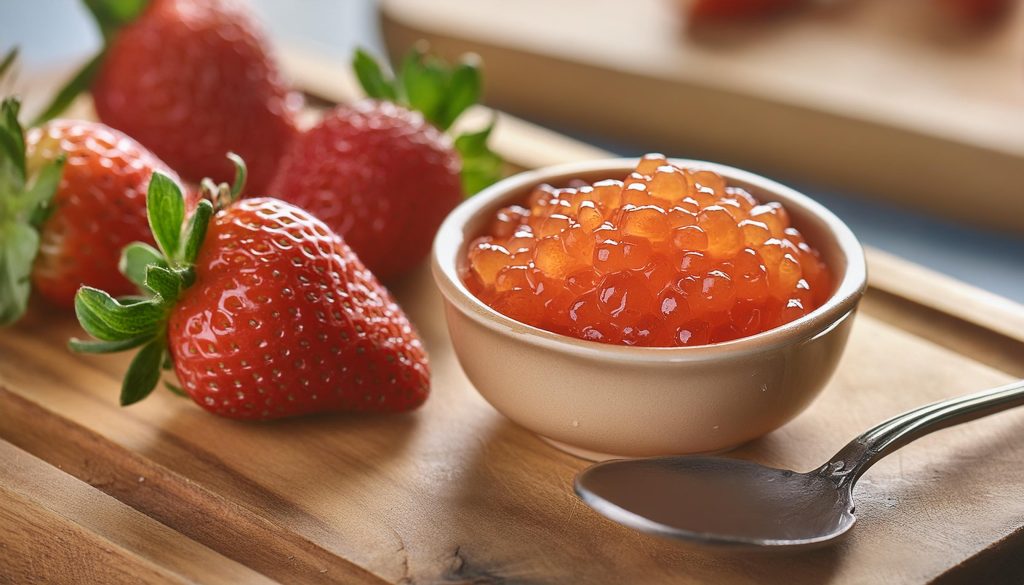
If you fancy yourself being a bit of a cocktail-making pro, and you have the right tools at home, then here are some more advanced techniques you can try out.
Sous vide infusions
Sous vide is a restaurant technique where food is precisely cooked in a sealed pouch submerged in a temperature-controlled water bath. This method is also shaking up the cocktail world. Sous vide infusions allow mixologists to extract intense flavours from fruits, herbs, and spices into spirits or syrups.
Molecular gastronomy
Molecular gastronomy, also known in the cocktail world as molecular mixology, applies the scientific principles of physics and chemical processes to create innovative and visually stunning cocktails. This scientific approach allows mixologists to push the boundaries of flavour, texture, and presentation in their drinks.
While these techniques add a layer of complexity and might require specialized equipment, they can elevate your cocktail game to a whole new level.
There you have it – a short and sweet introduction to the inspiring world of culinary cocktails. We can’t wait to see the amazing creations dream up, so remember to tag us when you post your sensational sips to social media. Cheers, dears!


